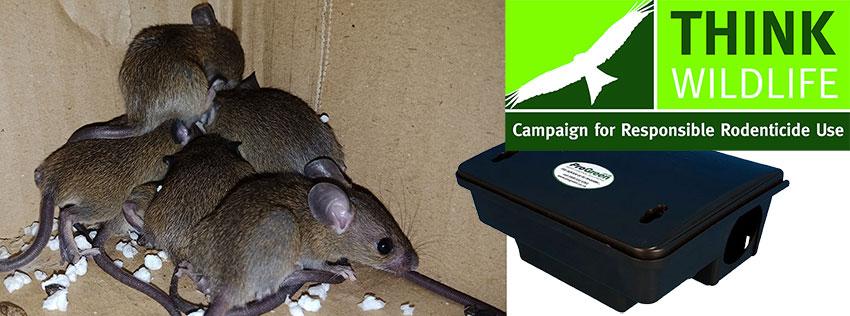Campaign for Responsible Rodenticide Use (CRRU)
The Campaign for Responsible Rodenticide Use (CRRU) is the code of good practice for the responsible use of rodenticides in rural areas. Anyone who is using rodenticides must apply best practice to limit the amount of exposure to non-target wildlife. Failure to follow these guidelines would eventually result in greater restrictions on who can use rodenticides and where they are allowed to be applied. This guide is suitable for those applying/ purchasing amateur use and professional use rodenticides.
The CRRU Code:
Always ensure that you have a planned approach
Before you even think about putting down rodenticides it is important to complete a thorough survey of the infested site. This allows you to see if there are any environmental changes that you are able to put in place to make the area less attractive to the rodents such as rodent proofing and removing rubbish and weeds which provide cover for the pests.
Record the quantity of bait that you have used and where it is placed
A site map should be drawn up plotting where and how much bait has been left in those certain areas. This allows you to know where the bait is when you are going back to check how effective it has been and also to make sure that you remove all leftover bait when the treatment is over. This will help to protect other wildlife from eating the bait.
Use enough bait points
By using enough bait points the rodent control treatment will be efficient and take a shorter amount of time. This again limits the length of exposure to non-target animals.
Collect and dispose of rodent bodies
It is important to collect all of the dead rodent bodies as they may still be carrying residues of rodenticides. If the dead bodies were to be eaten by predators or scavengers this could be a way that non-target animals could be exposed. For this reason regular searches for bodies is essential both during and after the treatment period as they can be found several days after having eaten the bait.
Never leave bait exposed to non-target animals or birds
When bait is placed, great care should be taken to avoid accidentally poisoning other animals or birds. In order to do this bait stations should only be accessible by rodents which will help to reduce the risk of non-target animals or unauthorised persons gaining access.
Inspect bait regularly
Daily visits should be made to the bait areas. At each visit bait should be replenished if needed and according to the product label. Alongside this a thorough search of the area should be made to ensure that there are no rodent bodies or there is any spilled bait. If there, is these need to be removed and disposed of safely. Each visit should be recorded in order to know what has happened.
Don’t leave bait down at the end of the treatment
Any bait that is left at the end of a rodenticide treatment could be a source of contamination to non-target animals. At the end of a treatment cycle all records should be updated to show that the infestation is controlled and all steps have been taken to ensure that the area is now rodenticide bait free.
The Campaign for Responsible Rodenticide Use (CRRU) is just a fraction of what is needed to be learnt before being able to purchase and apply professional grade rodenticides.
If you want to find out more about how to use Professional Rat & Mice Bait products, check out our rodenticide training courses here.





